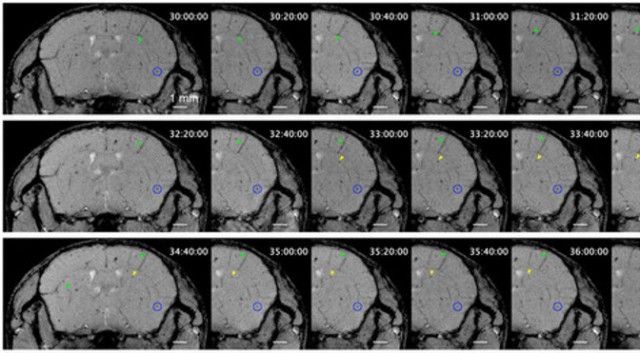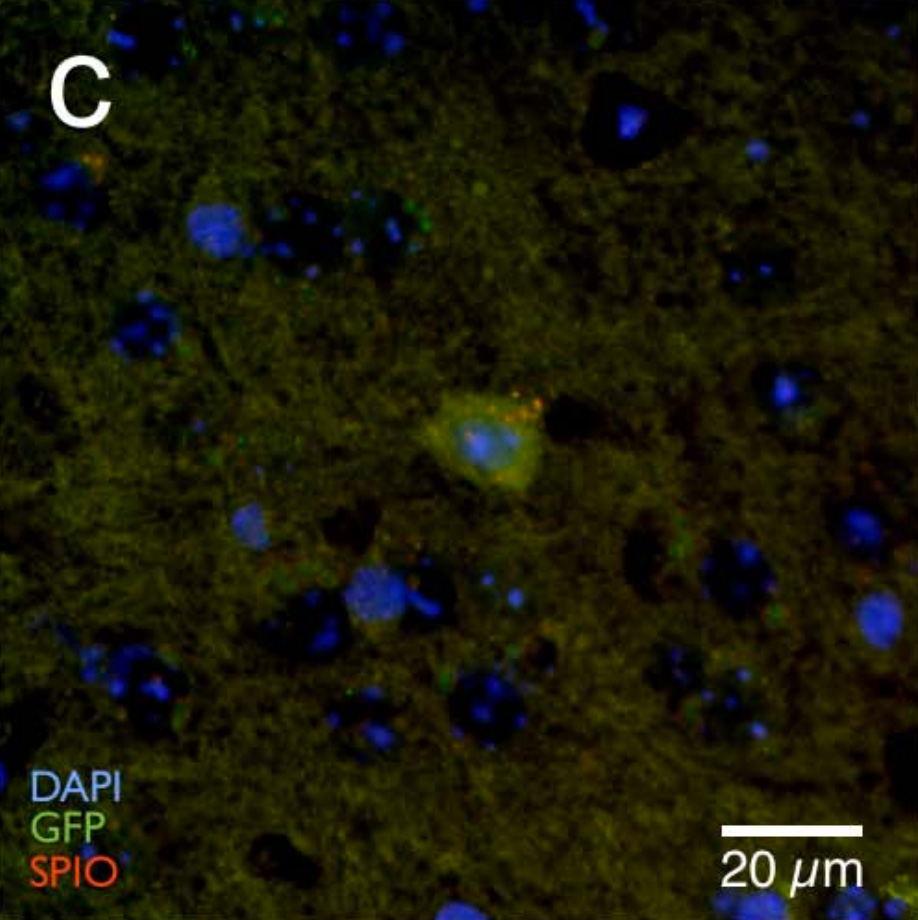
The bread and butter of any brain interface is stimulating and recording neurons. The more neurons we can set up lasting and meaningful dialog with, the better we might expect this interface will be. The truth this simplistic presumption belies is that the electric chattering of our neural cells — those once feral protists now encased in a cranial vault — is but a single face on the full spectrum of activities undertaken within their writhing mass. Researchers from Osaka, Japan have now perfected a way to watch these cells in their element; a way to capture what it is they might actually be doing.
This new brain sniper scope, first and foremost, requires tremendous power. That power comes in the form of the rivet-popping 12 Tesla magnetic field of a top-of-the-line MRI. Not only is 12T the current known upper bound of physiological safety, it is also around twice the max that any implantable medical device manufacturer wants to acknowledge even exists. With power comes resolution — single-cell resolution in fact — if you have a way to distinguish those cells. That trick comes in the form of tiny magnetically-active particles called SPIOs, for super-paramagnetic nanoparticles of iron oxide.
The researchers tested the idea by injecting SPIOs [PDF] into the bloodstream of mice where they were rapidly absorbed by circulating immune cells known as macrophages. These cells pass through the vasculature of the brain, and depending on their mood, sometimes slow down and take a closer look at things. These cells slip through the blood vessel walls in cloak mode and conduct molecular roll-call (literally integrating counts of surface molecules displayed on cells) throughout the neural ranks. Sometimes they will even fuse with the local neural residents, or otherwise change their identity much as they do in the initial population of various peripheral organs during development.
The researchers were able to enhance this natural macrophage curiosity by injecting lipopolysaccharides (LPS) derived from gram-negative bacteria. Under these conditions the immune cells generally go crazy, just as they do when these bacteria lead to toxic or septic shock. With the LPS on board it was much easier to see the cells crawling out of the blood vessels and making their way through the brain. The beauty of the technique is that if other cells in the brain can be labelled with any one of several slightly different nano-contrast agents, their fuss and maneuver as they jostle for synaptic partners may be seen.
Now this is not idle talk. Other researchers have already succeeded in similarly labeling (and watching) a stream of endogenous neural migrants possessed by each and every one us, even as adults. This stream of neuron precursors replenishes among other things, abused cells in the olfactory pathways that have absorbed a lifetime (weeks to months in their case) of noxious odorants. As elite neurosurgery now begins to move from the open theater and into the bore of an MRI magnet itself, these very olfactory cells which we just saw were critical in giving a paralyzed man the ability to walk will come into full view.
As newly transplanted cells are added to the central or peripheral nervous system in much this same way, we will no longer have to remain in the dark. Most neural transplant procedures are now currently done only in the hope of providing some auxiliary nourishing function to existing faulty neurons in the brain rather than acting as primary neural tissue bearing meaningful electrical intercourse with other cells. That paradigm can now change provided we have the right labels on new cells we add. Engaging these motile buggers as they flee or approach the equally nimble stimulating and recording hardware that the new neuroscience is now building suddenly becomes a whole lot more realistic.

As we have just described, the current day ability to track immune cells that invade the brain during infection or inflammation in stroke has already made itself useful. However as the “nourishing-only” approach, a blanket point of care if you will, for things like epilepsy and movement disorders becomes obsolete, more detailed circuit-level approaches will reign. Granted, like the elder orangutan sitting idle in his cage surrounded by rinds of fruit, many adult neurons don’t get up to moving about much. What these neurons, these seeming shadows of free and independent cells, now do instead is send curious neurites as far as the body will let them. Using SPIOs, and even more exotic imaging labels and techniques we might now watch not just whole cell bodies, but the flux of their axonal emissaries, and even the thoughtful apportionment of internal organelles throughout the cell’s domain of influence.
Source
[ads1]
Leave a Reply